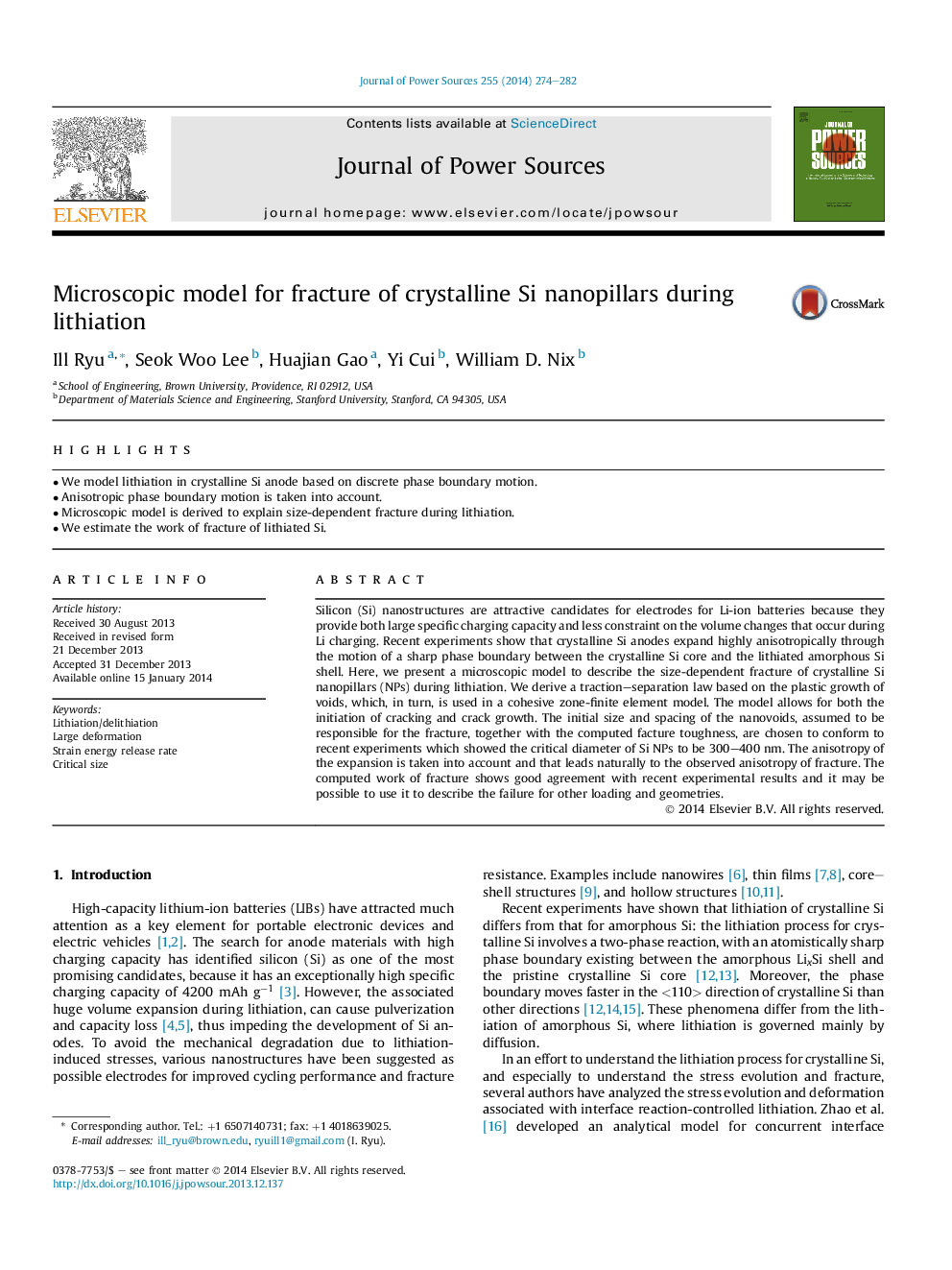| Article ID | Journal | Published Year | Pages | File Type |
|---|---|---|---|---|
| 1284213 | Journal of Power Sources | 2014 | 9 Pages |
•We model lithiation in crystalline Si anode based on discrete phase boundary motion.•Anisotropic phase boundary motion is taken into account.•Microscopic model is derived to explain size-dependent fracture during lithiation.•We estimate the work of fracture of lithiated Si.
Silicon (Si) nanostructures are attractive candidates for electrodes for Li-ion batteries because they provide both large specific charging capacity and less constraint on the volume changes that occur during Li charging. Recent experiments show that crystalline Si anodes expand highly anisotropically through the motion of a sharp phase boundary between the crystalline Si core and the lithiated amorphous Si shell. Here, we present a microscopic model to describe the size-dependent fracture of crystalline Si nanopillars (NPs) during lithiation. We derive a traction–separation law based on the plastic growth of voids, which, in turn, is used in a cohesive zone-finite element model. The model allows for both the initiation of cracking and crack growth. The initial size and spacing of the nanovoids, assumed to be responsible for the fracture, together with the computed facture toughness, are chosen to conform to recent experiments which showed the critical diameter of Si NPs to be 300–400 nm. The anisotropy of the expansion is taken into account and that leads naturally to the observed anisotropy of fracture. The computed work of fracture shows good agreement with recent experimental results and it may be possible to use it to describe the failure for other loading and geometries.
